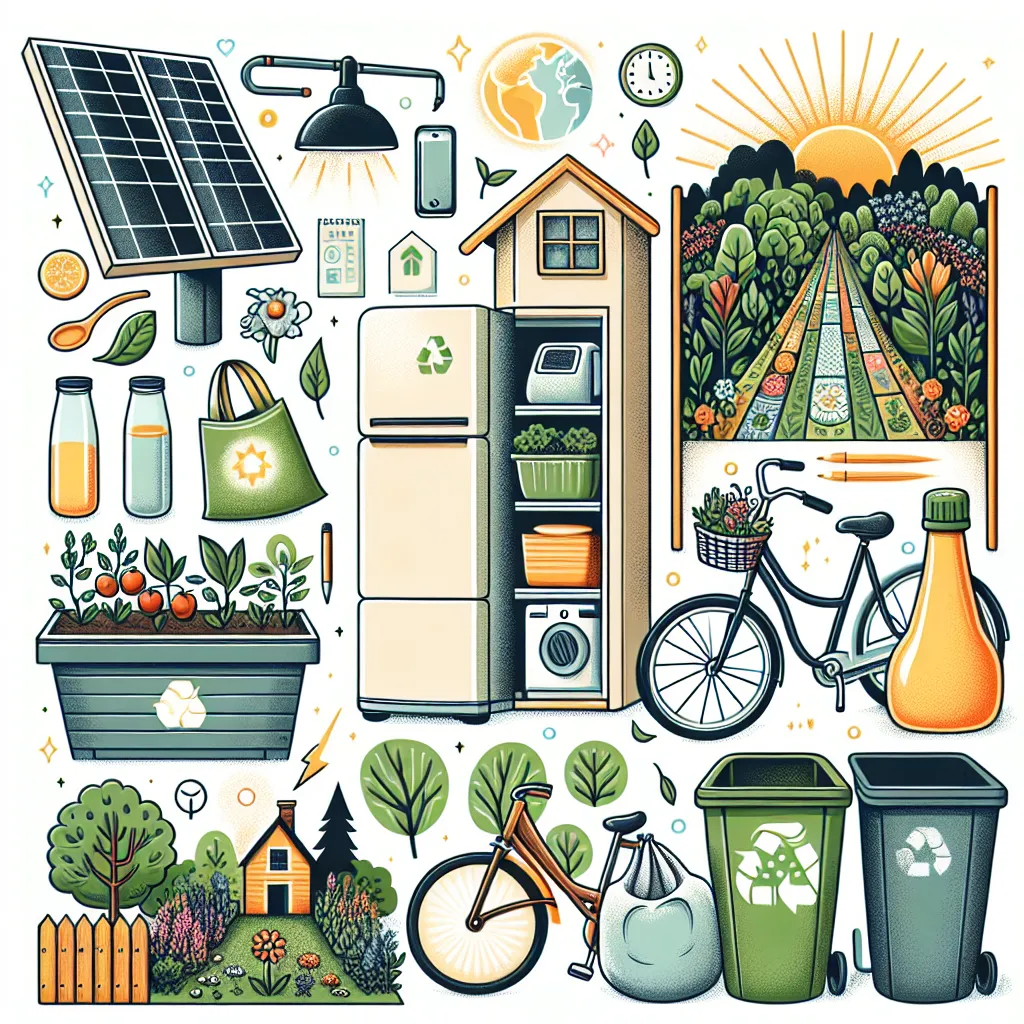The IELTS Reading section is a crucial component of the test, assessing your ability to comprehend complex texts and extract relevant information. Today, we’ll focus on a topic that has gained significant attention in recent years: reducing our environmental impact in daily life. This subject has appeared frequently in IELTS exams, reflecting its global importance. Given the ongoing environmental concerns, it’s highly likely that similar themes will continue to feature in future tests. Let’s dive into a practice reading passage on this timely topic.
Reading Passage
Minimizing Your Environmental Footprint: Simple Steps for Daily Life
In an era of increasing environmental awareness, individuals are seeking ways to reduce their impact on the planet. While large-scale changes are necessary, small daily actions can collectively make a significant difference. This article explores practical strategies for minimizing your environmental footprint in everyday life.
One of the most effective ways to reduce your environmental impact is through conscious consumption. This involves being mindful of what you buy and how you use resources. Start by assessing your needs versus wants. Before making a purchase, consider whether the item is truly necessary. If it is, look for durable, high-quality products that will last longer, reducing the need for frequent replacements. Additionally, opt for products with minimal packaging or those made from recycled materials.
Energy conservation is another crucial aspect of reducing your environmental footprint. Simple habits like turning off lights and unplugging electronics when not in use can lead to substantial energy savings. Switching to energy-efficient appliances and LED light bulbs can further decrease your electricity consumption. Consider using a programmable thermostat to optimize heating and cooling, and take advantage of natural light and ventilation when possible.
Transportation is a significant contributor to individual carbon footprints. Whenever feasible, choose eco-friendly modes of transport such as walking, cycling, or using public transportation. If you must drive, consider carpooling or investing in an electric or hybrid vehicle. For longer distances, look into train travel as an alternative to flying, as it generally has a lower environmental impact.
Water conservation is often overlooked but is equally important in reducing your environmental impact. Install low-flow faucets and showerheads, fix leaks promptly, and collect rainwater for gardening. Be mindful of your water usage during daily activities like brushing teeth or washing dishes. Choose drought-resistant plants for your garden to minimize watering needs.
Waste reduction is a critical component of environmental stewardship. Embrace the principles of “reduce, reuse, recycle.” Minimize single-use items, especially plastics, by opting for reusable alternatives like cloth shopping bags, refillable water bottles, and metal straws. Compost organic waste when possible, and ensure you’re recycling correctly according to local guidelines.
 Eco-friendly lifestyle
Eco-friendly lifestyle
Diet plays a significant role in your environmental impact. Consider reducing meat consumption, particularly red meat, as livestock farming is a major contributor to greenhouse gas emissions. Incorporate more plant-based meals into your diet and choose locally sourced, seasonal produce to reduce transportation emissions. When shopping, bring your own bags and containers to minimize packaging waste.
Lastly, education and advocacy are powerful tools for environmental change. Stay informed about environmental issues and share your knowledge with others. Support businesses and policies that prioritize sustainability. Remember, your individual actions, when combined with those of others, can create a substantial positive impact on our planet’s health.
By incorporating these strategies into your daily life, you can significantly reduce your environmental footprint. While it may seem daunting at first, many of these changes become second nature with time and practice. The key is to start small and gradually expand your efforts. Every action, no matter how small, contributes to a more sustainable future for all.
Questions
True/False/Not Given
- Conscious consumption involves buying only luxury items.
- Energy-efficient appliances can help reduce electricity consumption.
- Train travel always has a lower environmental impact than flying.
- Water conservation includes fixing leaks promptly.
- Composting is recommended for all types of waste.
Multiple Choice
-
Which of the following is NOT mentioned as a way to reduce energy consumption?
A) Turning off lights when not in use
B) Using energy-efficient appliances
C) Installing solar panels
D) Unplugging electronics -
According to the passage, which mode of transportation is considered most eco-friendly?
A) Driving an electric car
B) Flying
C) Walking or cycling
D) Carpooling
Matching Information
Match the following strategies with their corresponding environmental impact areas:
- Using cloth shopping bags
- Installing low-flow showerheads
- Choosing locally sourced produce
A) Water conservation
B) Waste reduction
C) Diet-related impact
Short Answer Questions
-
Name two ways to reduce packaging waste when shopping. (Use NO MORE THAN THREE WORDS for each answer)
a)
b) -
What type of plants are recommended for gardens to minimize water usage? (Use NO MORE THAN THREE WORDS)
Answer Key and Explanations
-
False – The passage states that conscious consumption involves being mindful of what you buy and assessing needs versus wants, not buying luxury items.
-
True – The text explicitly mentions that “Switching to energy-efficient appliances… can further decrease your electricity consumption.”
-
Not Given – While the passage suggests train travel as an alternative with “generally” lower environmental impact, it doesn’t state that it’s always lower.
-
True – The passage directly states “fix leaks promptly” as part of water conservation efforts.
-
False – The text recommends composting “organic waste,” not all types of waste.
-
C – Installing solar panels is not mentioned in the passage as a way to reduce energy consumption.
-
C – The passage states, “Whenever feasible, choose eco-friendly modes of transport such as walking, cycling, or using public transportation.”
-
B – Using cloth shopping bags relates to waste reduction by minimizing single-use items.
-
A – Installing low-flow showerheads is mentioned under water conservation.
-
C – Choosing locally sourced produce is discussed in the section about diet’s impact on the environment.
-
a) Bring own bags
b) Bring own containers
(The passage states: “When shopping, bring your own bags and containers to minimize packaging waste.”) -
Drought-resistant plants
(The text mentions: “Choose drought-resistant plants for your garden to minimize watering needs.”)
Common Mistakes to Avoid
-
Overlooking subtle differences: In True/False/Not Given questions, pay close attention to absolute statements. For example, question 3 uses “always,” which isn’t supported by the text.
-
Falling for distractors: In multiple-choice questions, all options may seem plausible. Always refer back to the text to verify information.
-
Misinterpreting context: In matching exercises, ensure you understand the context in which information is presented. For example, cloth bags are mentioned in the context of waste reduction, not just shopping.
-
Exceeding word limits: In short answer questions, adhere strictly to the word limit given. Practice concise, accurate responses.
-
Inferring unsupported information: Stick to what’s explicitly stated in the text. Avoid making assumptions based on general knowledge.
Vocabulary
- Footprint (noun) – /ˈfʊtprɪnt/ – the impact or effect that something has
- Consumption (noun) – /kənˈsʌmpʃən/ – the act of using up resources
- Durable (adjective) – /ˈdjʊərəbl/ – able to last a long time without significant deterioration
- Ventilation (noun) – /ˌventɪˈleɪʃn/ – the provision of fresh air to a room, building, etc.
- Stewardship (noun) – /ˈstjuːədʃɪp/ – the job of supervising or taking care of something
Grammar Points
-
Passive Voice: “Simple habits like turning off lights and unplugging electronics when not in use can lead to substantial energy savings.”
- Structure: Subject + can/could/should + be + past participle
- Example: Energy can be saved by turning off unused appliances.
-
Conditional Sentences: “If you must drive, consider carpooling or investing in an electric or hybrid vehicle.”
- Structure: If + present simple, imperative/present simple
- Example: If you want to reduce your carbon footprint, use public transportation more often.
Tips for High Scores in IELTS Reading
-
Time management: Allocate your time wisely among the three sections of the reading test.
-
Skim and scan: Quickly skim the passage for general understanding, then scan for specific information.
-
Understand question types: Familiarize yourself with various question formats to approach them effectively.
-
Practice active reading: Engage with the text by underlining key points and making mental notes.
-
Improve vocabulary: Regularly learn new words and phrases related to common IELTS topics.
-
Read widely: Expose yourself to various texts on different subjects to enhance comprehension skills.
-
Focus on keywords: Identify key terms in questions to locate relevant information in the passage quickly.
-
Check your answers: If time allows, review your answers for any careless mistakes.
By following these strategies and practicing regularly with diverse reading materials, you can significantly improve your performance in the IELTS Reading section. Remember, consistency is key in preparing for the IELTS exam.
For more tips on improving your IELTS score, check out our guides on how to reduce your environmental footprint and how to reduce waste in daily life. These resources provide valuable insights that can enhance both your language skills and environmental awareness.


